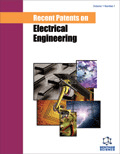Abstract
In this part, we describe three methods of strain metrology that are based upon the use of electron microscopes. Either a finely focused electron beam in a scanning electron microscope (SEM) or a collimated electron beam in a transmission electron microscope (TEM) can be used to obtain strain information from a semiconductor sample. Unlike the optical methods in part 2, all three methods are suitable for probing device structures because electron beam techniques have much higher spatial resolution and the researcher can select the area of interest within the sample. The cathodoluminescence method of chapter 6 is based on the effect of strain upon the bandgap of a semiconductor. From the standpoint of principle, it is similar to the methods in chapters 3 to 5.
The other two methods in this part make use of the wave property of the electron. The electron diffraction methods of chapter 7 discuss two recent techniques: nanodiffraction and convergent beam electron diffraction. Both techniques had been applied to probe the strain distribution within strained silicon transistors. The electron holographic Moire method of chapter 8 is a very new and promising method. It makes use of the interference of two coherent electron beams from the same electron source in a TEM to generate an electron hologram. Unlike conventional holograms, one beam passes through a strained region of the sample and the other beam passes through an unstrained substrate region of the sample. Strain information is then extracted from the phase image derived from the electron hologram by the geometrical phase analysis method developed originally for high resolution TEM.





















